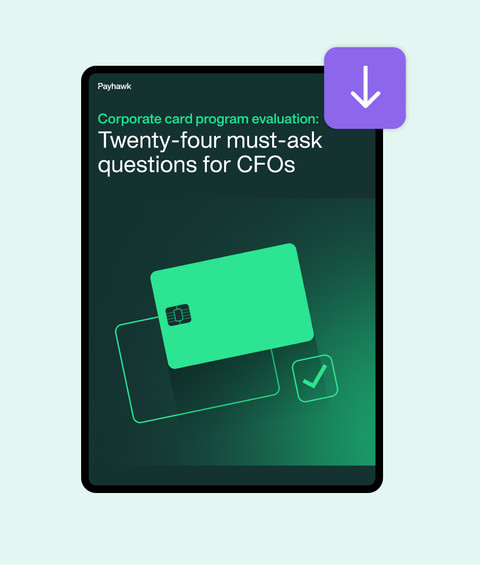
Guide to GAAP Changes in 2024: FRS 102 Section 1A



The FRS 102 Section 1A, crucial for smaller entities in the UK and Ireland, is undergoing significant changes with the introduction of FRED 82 and FRED 83. These updates, expected to be effective from 2025, aim to align more closely with IFRS standards, introducing new sections on revenue recognition, lease accounting, and fair value measurement. Find out how these changes will impact your daily accounting practices.
By submitting this form, you agree to receive emails about our products and services per our Privacy Policy.
In this article, we look at how FRS102 Section 1A affects small and mid-sized entities and the proposed changes, including:
- What is FRS102?
- What is a FRED?
- What is in FRS102 Section 1A?
- Why is FRS 102 changing?
- How can your business adjust to FRS 102 changes?
What is the purpose of FRS 102?
FRS 102, which stands for Financial Reporting Standard 102, is an accounting standard used in the United Kingdom and the Republic of Ireland. It was introduced by the Financial Reporting Council (FRC) to replace the previous UK Generally Accepted Accounting Practice (UK GAAP) for mid-sized and large entities and as a result, you will often hear people referring to it informally as “UK GAAP”.
FRS 102 is based on the International Financial Reporting Standards (IFRS) for Small and Medium-sized Entities (SMEs) and the main objective is to improve the quality, consistency, and transparency of financial reporting.
It sets out the principles and requirements for the preparation and presentation of financial statements, ensuring that entities provide relevant and reliable information to users.
FRS 102 covers a wide range of accounting topics, including recognition, measurement, and presentation of assets, liabilities, income, and expenses. It provides guidance on various areas, such as revenue recognition, leasing, financial instruments, and employee benefits.
The standard also includes specific requirements for the disclosure of information, such as related party transactions and contingencies.
One significant feature of FRS 102 is its section (1A) on small entities, which provides simplified accounting requirements for qualifying entities. These requirements are designed to reduce the reporting burden for smaller businesses while still ensuring that the financial statements provide a true and fair view.
Overall, FRS 102 plays a crucial role in promoting transparency and consistency in financial reporting within the UK and the Republic of Ireland. It provides a comprehensive framework that enables entities to prepare financial statements that meet the needs of various stakeholders, including investors, creditors, and regulators.
What is a FRED in accounting?
As the accounting and taxation environment changes, the Financial Reporting Council (FRC) updates standards to ensure that they remain relevant and useful through the Financial Reporting Exposure Draft (FRED) system.
The council releases a draft of the changes and invites comments from interested parties, building these into a final version of an updated standard.
FRED 82 and FRED 83 are currently within this process with comments having closed for FRED82 in April 2023 and for FRED83 in May 2023. Responses from accountancy bodies and firms have already been published by the FRC here.

What is in FRS102 Section 1A?
Section 1A of FRS102 sets out the information that must be presented and disclosed in the financial statements of a small entity that chooses to apply the small entities regime.
Under FRS 102, a small entity is defined as an entity that meets at least two of the following criteria:
- Total assets not exceeding £5.1 million.
- Annual turnover not exceeding £10.2 million.
- An average number of employees not exceeding 50.
If an entity meets the criteria for being classified as a small entity, it can choose to apply the small entities regime outlined in FRS 102.
Small entities must apply the recognition and measurement requirements of FRS 102 in full but are subject to different presentation and disclosure requirements. This section replaces the existing Financial Reporting Standard for Smaller Entities (FRSSE).
Section 1A sets out the minimum content elements that a small entity must include in its financial statements, namely:
- a Statement of Financial Position;
- an Income Statement;
- notes that include the disclosures required by law;
Keep in mind that the financial statements of a small entity must also include any extra disclosures necessary to give an accurate and fair view of the assets, liabilities, financial position and profit or loss of the entity for the reporting period.
To a large extent, this is where small entities may face changes in the way they report following the proposals.
What is changing in FRS 102?
The FRC periodically updates FRS 102 to align with IFRS changes and address emerging issues. Entities need to stay informed about these updates to ensure compliance with the standard.
FRED 82 contains a number of changes relating to FRS102 and these are expected to come into force on 1st January 2025 and are designed to move the FRS closer to IFRS standards.
These changes include;
- A new Section 23, based on the IFRS 15 five-step model for revenue recognition, with appropriate simplifications for smaller entities
- A new Section 20 for lease accounting, based on the IFRS 16 on-balance sheet model, with appropriate simplifications
- Greater clarity for small entities in the UK applying FRS102 Section 1A
- A new Section 2A Fair Value Measurement
A new Section 23, based on the IFRS 15 five-step model
Specifically for revenue recognition from contracts with customers, the standard includes a straightforward five-step process:
Step 1 - Identify the contracts with a customer;
Step 2 - Identify the promises in the contract;
Step 3 - Determine the transaction price;
Step 4 - Allocate the transaction price to the promises in the contract;
Step 5 - Recognise revenue when (or as) the entity satisfies a promise.
A new Section 20 for lease accounting, based on the IFRS 16
Moves all leases to the on-balance sheet model with each being shown as both a liability for the total lease payments and an asset for the underlying leased asset.
The proposal does allow simplifications for smaller entities.
Greater clarity for small entities in the UK applying FRS102 Section 1A
FRS102-1A identifies what items are not required for small entity reporting and includes custom instructions for SMEs reporting in Ireland.
A new Section 2A Fair Value Measurement
The appendix to section 2 dealing with fair value measurement has now been given a more prominent place as section 2A in the proposed standard.
FRED 83 Inclusion of OECD Pillar 2 rules
In 2021 the OECD proposed international tax rules to ensure that global businesses, especially those working in the digital economy pay a minimum amount of tax.
FRED 83 proposes changes to FRS101 and FRS102 to align reporting with these rules and to give temporary exceptions for deferred tax and reporting for smaller entities.
What to do now
The first port of call has to be with the entity's auditors. Typically, they will also be responsible for producing the statutory accounts, so working with them is vital to get ahead of the changes.
Companies will need to identify whether they are affected by FRED83 as the changes are proposed to be immediate, meaning that they will apply to all statutory accounts produced after 1st January 2023.
Whilst the effective date for the FRED82 changes is some way off at 1st January 2025, it is crucial to understand the effects that revenue recognition and lease changes will have as it is entirely expected that businesses will have to amend their daily accounting entries to ensure that the correct data is available.
This means that it is best to take action now, understand the standards and then liaise with auditors to ensure that the required data analysis is available.
Summary: early preparation is essential
The changes that are on the way for FRS102 section 1A aren’t complex in themselves, but they require a fairly sophisticated data analysis capability.
This means that companies will have to fully understand the standards and work out how they will apply them daily.
It is also true to say that some software packages may not have the data analysis and reporting capability that will be needed, which will require the company to decide whether it will change providers or find an alternative solution.
Book a demo to understand how expense management software with smart ERP integrations can help you fill in the gaps when it comes to business spend vs income and revenue generation.
Trish Toovey works across the UK and US markets to craft content at Payhawk. Covering anything from ad copy to video scripting, Trish leans on a super varied background in copy and content creation for the finance, fashion, and travel industries.
Related Articles


Practical spend management guide for mid-market CFOs and finance leaders

